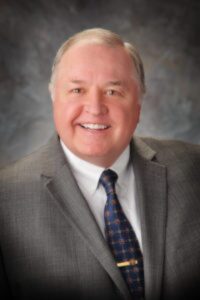The No. 1 credit union SBA lender is hanging out the help wanted sign
Six years ago, when America First Credit Union in Salt Lake City decided to move into Small Business Administration lending, CEO John Lund gave his team simple instructions. “He told us to be No. 1,” Blake Weathers, America First’s senior vice president of commercial lending recalled.
America First Credit Union in Salt Lake City is angling to grow its 7(a) lending business by hiring additional loan officers.
The $19.1 billion-asset America First responded. Its volume of loans closed under the 7(a) loan guarantee program — SBA’s largest program — jumped from $2.1 million in the agency’s 2017 fiscal year to $3.6 million in fiscal 2018. Fast forward to fiscal years 2022 and 2023, and America First has ranked as the nation’s No. 1 credit union 7(a) lender. In fiscal 2023, it closed 61 7(a) loans for $71.8 million.
While America First would like to continue on a growth path, its progress depends largely on the ability to expand its 7(a) lending team. “We’d like to create greater capacity, but you have to have SBA lenders to do the deals,” Weathers said. “It’s a people business. The number of people we have tells us about where we can get our loans to. We know we’re going to have to add some more loan officers to be able to grow.”
For America First and other credit unions, however, staffing has emerged as a challenge. With experienced SBA loan officers in demand generally, credit unions are doubly disadvantaged since “most of the talent resides in the banking industry,” Weathers said. Though more lenders are signing on with credit unions, according to Weathers, the industry as a whole commands just a fraction of the roughly $30 billion 7(a) market.
According to SBA statistics, credit union 7(a) lenders closed 263 7(a) loans between Oct. 1 and Dec. 21 for $115 million. Banks have generated the lion’s share of the program’s $5.8 billion in fiscal 2024 loan volume. SBA’s fiscal years begin Oct. 1. Under 7(a), the agency provides guarantees ranging from 50% to 85% on small-business loans made by banks, credit unions and other private sector lenders.
“The numbers don’t surprise me simply because SBA lending is a specialized form of lending,” said James Ballentine, founder and CEO of Ballentine Strategies, a Washington, D.C.-based government and strategic consulting firm. “There’s special training that’s required to work within [the 7(a)] program. It’s not an area credit unions have traditionally been involved in, despite the fact they were given the authority some time ago.”

For America First, entry into 7(a) lending filled a major gap in its product set. It’s also appeared to play a major role in the company’s success in recent years. Prior to 2017, America First offered small-dollar business loans and was active in conventional commercial lending, Weathers said. Adding SBA participation allowed the credit union to take care of a company’s needs throughout all stages of growth. “We can carry them through their life cycle,” Weathers said.
America First’s balance sheet appears to demonstrate the validity of its 7(a) strategy. Commercial lending, which totaled about $329 million at the end of 2017, exceeded $1.2 billion at Sept. 30. Over the same period, net income jumped more than 300%, to $386.5 million at Sept. 30.
“The minute we started to feel comfortable with SBA lending … our members responded,” America First President and CEO Thayne Shaffer said. “We had a willing and ready audience.” States that comprise America First’s footprint, particularly Utah, Nevada and Arizona, are characterized by high levels of interest in small-business formation, Shaffer, who succeeded Lund in 2021, added. “It’s part of the culture, to be honest with you,” Shaffer said. “It’s not uncommon for people to sit down and have ideas and turn them into small businesses.”
“We have a lot of members that own small businesses,” Weathers said. “It’s probably 15% to 20% of our membership.”
John Reosti Reporter

